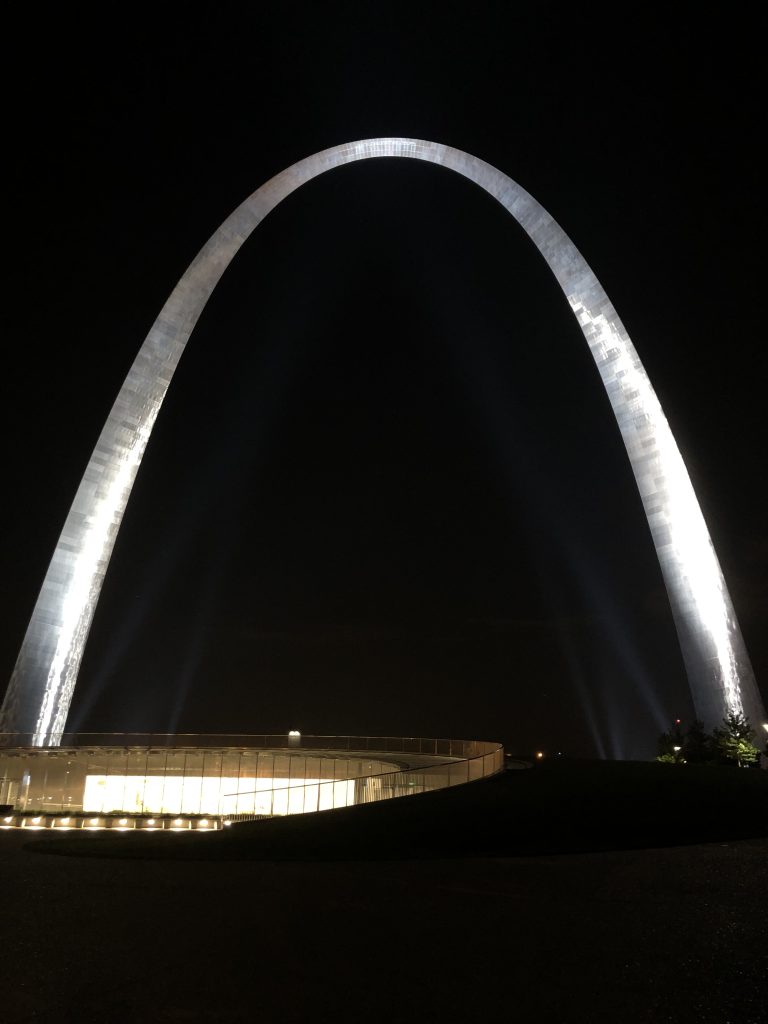
The History of the Construction of the Gateway Arch in St. Louis, Missouri
The Gateway Arch in St. Louis, Missouri, stands as one of the most iconic structures in the United States. Recognized worldwide for its stunning design and striking visual presence, it symbolizes both the westward expansion of the United States and the city’s role in that historic movement. However, the story of how this architectural marvel was conceived and constructed is one of ambition, innovation, and overcoming numerous challenges.
The Idea and Vision Behind the Gateway Arch
The concept of the Gateway Arch dates back to the 1930s, but it was not until the 1940s and 1950s that serious discussions began. The idea for a national monument commemorating the westward expansion of the United States was put forward after the city of St. Louis became the site of the 1904 World’s Fair. While the exposition was a success, the idea of creating a lasting symbol of St. Louis’ historical significance began to percolate years later.
The vision of the arch as we know it today was solidified after the formation of the Jefferson National Expansion Memorial Commission in 1947. The primary goal of this commission was to establish a national park that would honor the role of St. Louis as the starting point for the westward expansion of the United States. The Arch, it was hoped, would serve as the focal point for this memorial.
The Design Competition
In 1947, a nationwide design competition was held to determine the monument’s appearance. Out of the many designs submitted, the winner was architect Eero Saarinen, a Finnish-American visionary known for his modernist approach to architecture. Saarinen’s design was chosen for its sweeping, elegant form that symbolized both the movement of the American frontier and the idea of the Gateway to the West.
Saarinen’s arch, a hyperbolic paraboloid standing 630 feet tall, was unique for its sleek, minimalist design, which was in stark contrast to many of the ornate buildings that dominated architecture at the time. The arch would not only stand as a monumental piece of architecture but also incorporate the latest engineering techniques to ensure its stability and visual impact.
Construction Begins
Groundbreaking for the Gateway Arch began in February 1963, almost two decades after the competition was held. While the design was visionary, the construction presented significant challenges. The arch’s unique shape meant that traditional construction methods could not be used. Engineers needed to develop new techniques to build the massive structure without compromising the architectural design.
The first major challenge was the construction of the foundation. The Arch’s base is anchored in a concrete slab, which required excavation and heavy reinforcement to hold the weight of the massive steel structure. In order to ensure the arch remained stable and aligned during construction, an innovative method called “staging” was used. The arch was constructed from both sides simultaneously, with the sections being hoisted into place by cranes. The two halves were gradually brought together at the top, where they met with an almost imperceptible seam.
The Engineering Marvel
The Gateway Arch’s design required unprecedented engineering precision. Each steel section was fabricated off-site and then transported to the construction site. The steel was coated with stainless steel to withstand the elements and maintain its brilliant appearance. The construction process involved meticulous calculations and regular adjustments to ensure that the two halves of the arch would meet perfectly at the top.
One of the most remarkable aspects of the arch’s construction was the technology used to ensure the structure’s stability. The arch’s base is wide enough to support its enormous weight, and its elegant curve helps distribute stress evenly. Engineers used advanced geometric principles to calculate the structure’s response to wind, temperature fluctuations, and other environmental factors, ensuring the arch would stand the test of time.
Completion and Opening
After more than two years of construction, the Gateway Arch was completed in October 1965, a year later than originally planned. The final cost of the project was about $13 million—a significant sum at the time.
On October 28, 1965, President Lyndon B. Johnson officially dedicated the Gateway Arch as part of the Jefferson National Expansion Memorial, which encompasses the Arch, the Old Courthouse, and the surrounding park. The Arch quickly became a symbol of St. Louis, the United States’ westward expansion, and the power of modern architecture.
The Gateway Arch Today
The Gateway Arch has become one of the most recognizable landmarks in the world, drawing millions of visitors each year. The Arch is also an essential symbol of St. Louis’ historical significance and its role in shaping the development of the United States.
Today, visitors can take a tram ride to the top of the arch, where they can enjoy breathtaking views of the city and the Mississippi River. The Gateway Arch remains a testament to the creativity, vision, and perseverance that went into its design and construction. It is not only a stunning piece of architecture but also a lasting tribute to the spirit of exploration and expansion that defined early American history.
In recognition of its historical importance and innovative design, the Gateway Arch was designated a National Historic Landmark in 1987 and a National Park in 2018. Its construction story continues to inspire architects, engineers, and dreamers around the world.
Cedar Hill St. Louis Jefferson County Olivette Kirkwood Ballwin Arnold Franklin County St Charles County Fenton High Ridge Dittmer Creve Coeur
